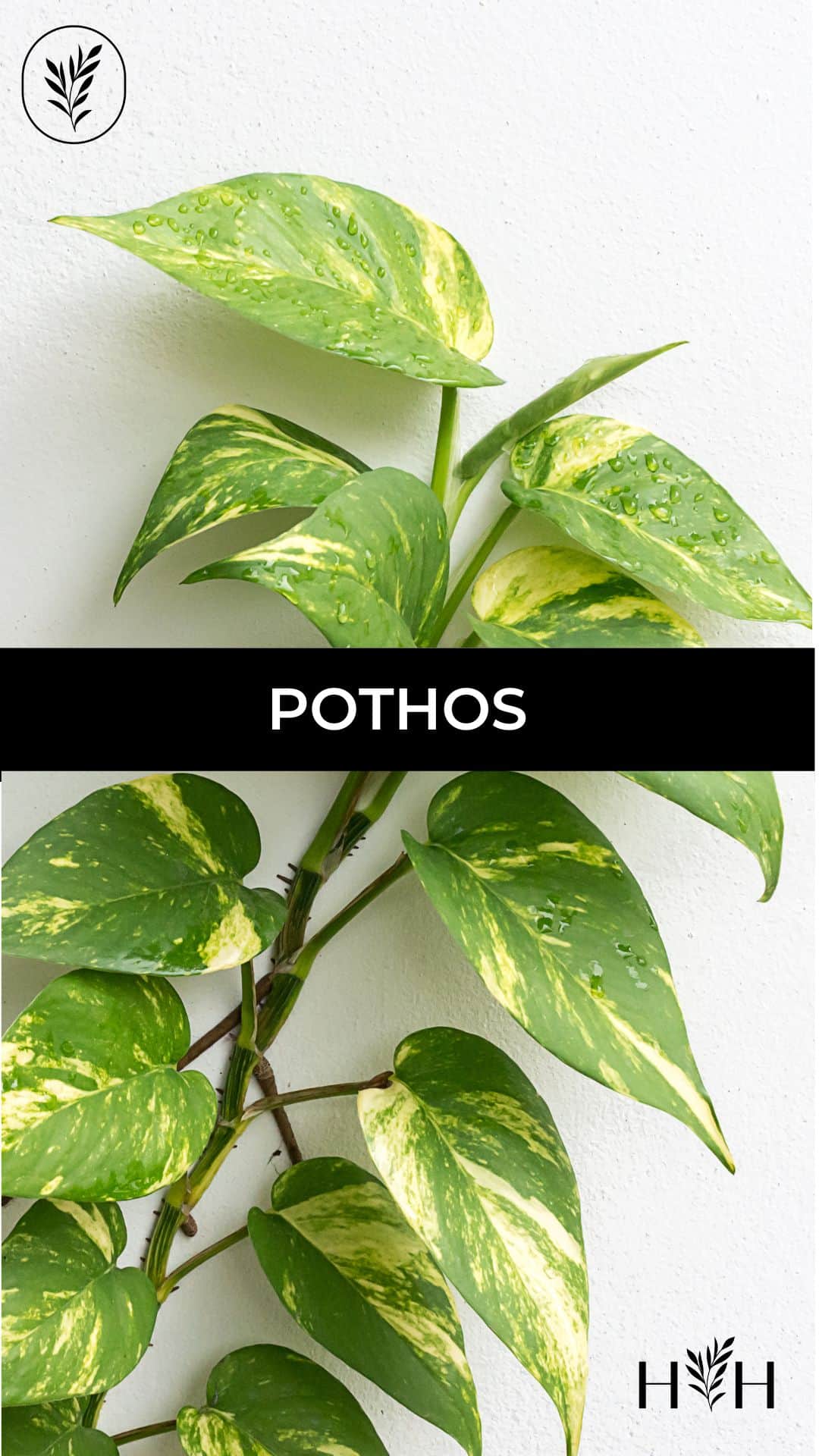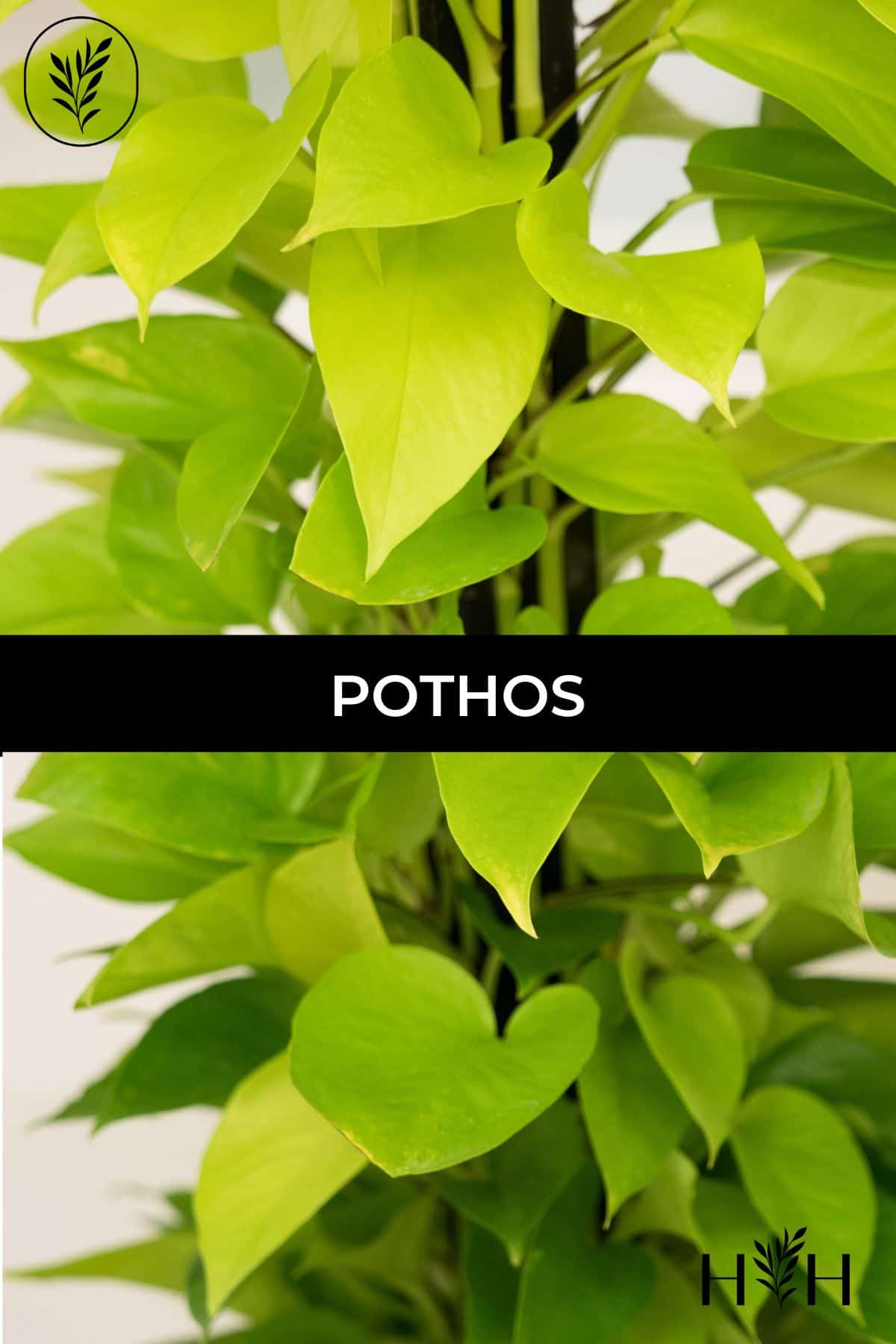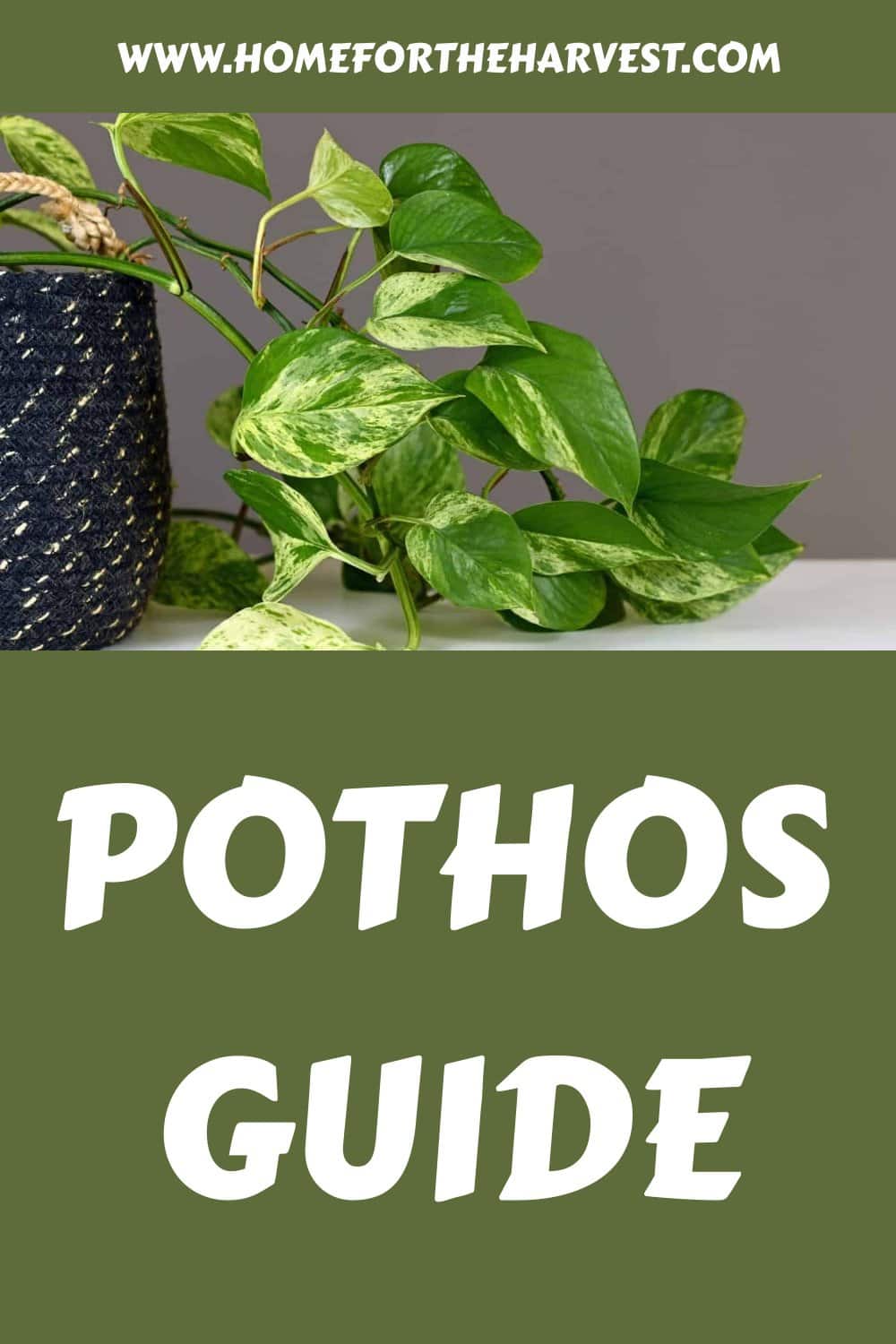Pothos (Epipremnum aureum) is a tropical vining plant native to French Polynesia that is commonly grown as a houseplant. Pothos is well-known among plant enthusiasts for being easy to grow while also having highly attractive leaves that trail down along elegant vines. Many specialty varieties have variegated or patterned leaves that make them highly sought-after.
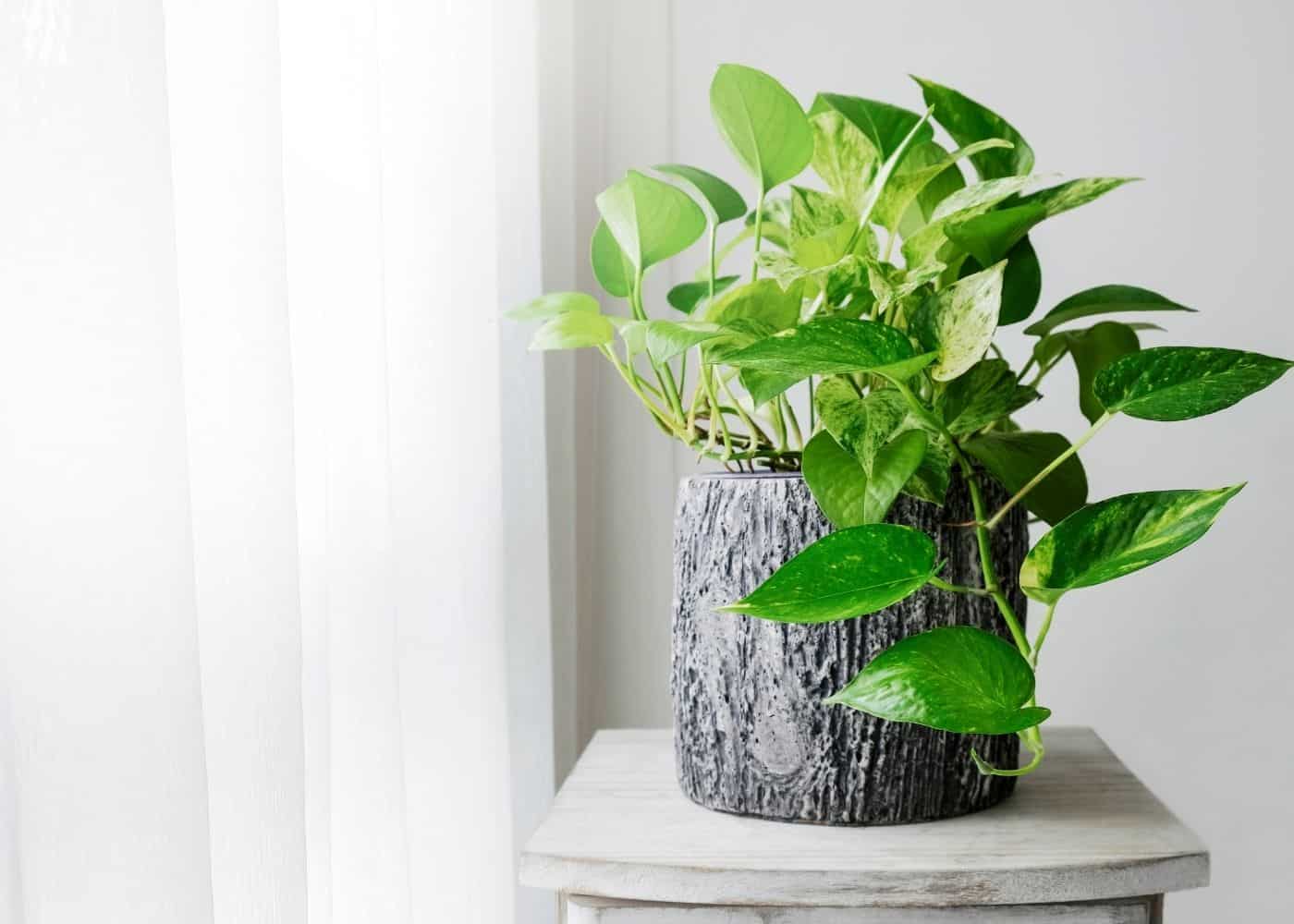
Pothos: The basics
Pothos plants (Epipremnum aureum), also known as “Devil’s Ivy,” are very easy to maintain, making them popular amongst beginner gardeners. These plants grow best with plenty of filtered, indirect sunlight and soil with even moisture levels. That said, Pothos plants can withstand a little neglect, so don’t worry too much if you forget to water them now and then.
The botanical Latin name for Pothos is Epipremnum aureum, where Epipremnum is the genus. Pothos is classified within the plant family Araceae, which also includes popular houseplant genera like Alocasia, Dieffenbachia, and Philodendron. Although these houseplants can make an excellent addition to your home, they are toxic to pets and to humans, so it’s best to keep them away from pets and small children.
“Pothos (Epipremnum aureum) is often considered the easiest and most foolproof of all houseplants.”
What’s Wrong With My Houseplant, by David Deardorff & Kathryn Wadsworth
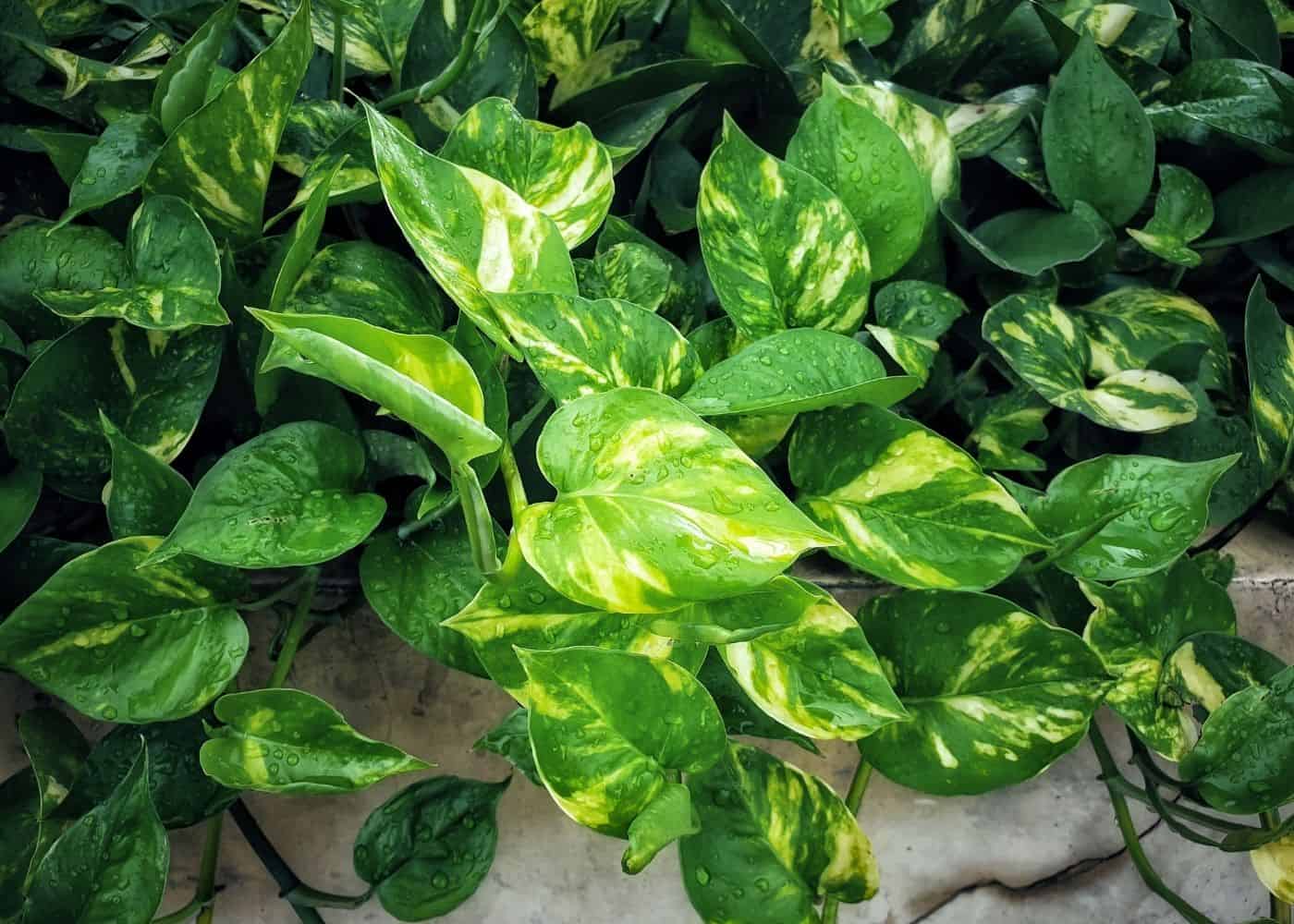
Buying pothos plants
Depending on the type, you can buy Pothos plants at your local garden store or an online plant store for around $20-$50. The price usually depends upon the size of the plant and what kind of planter it’s sold in. Sometimes these plants are on sale at garden centers in small 4″ plastic pots for more like $10, although they may not be a “named” variety like those listed below.
Pothos varieties
There are many varieties of Pothos plants, the most popular being Marble Queen, Golden, and Neon Pothos. Here are some of the most popular Pothos varieties:
- Marble Queen Pothos has light green leaves with marbled white markings.
- Golden Pothos has golden variegation along bright green leaves.
- Neon Pothos has bright neon green leaves, hence its name.
- Snow Queen Pothos has white and dark green speckled leaves.
- Pearls and Jade Pothos has vibrant green leaves on the darker side.
- N’Joy Pothos has green and creamy white splotchy leaves, similar to Marble Queen.
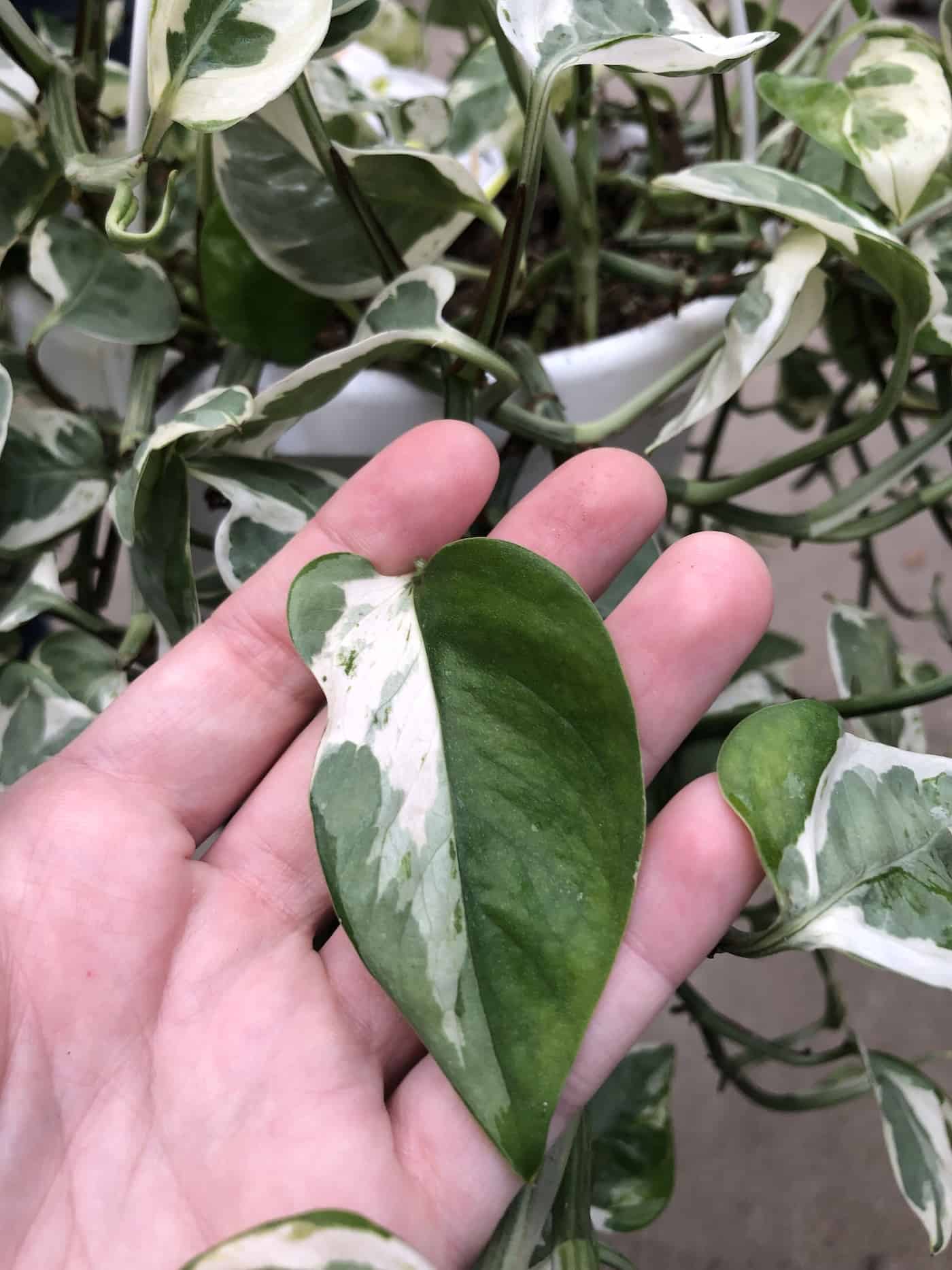
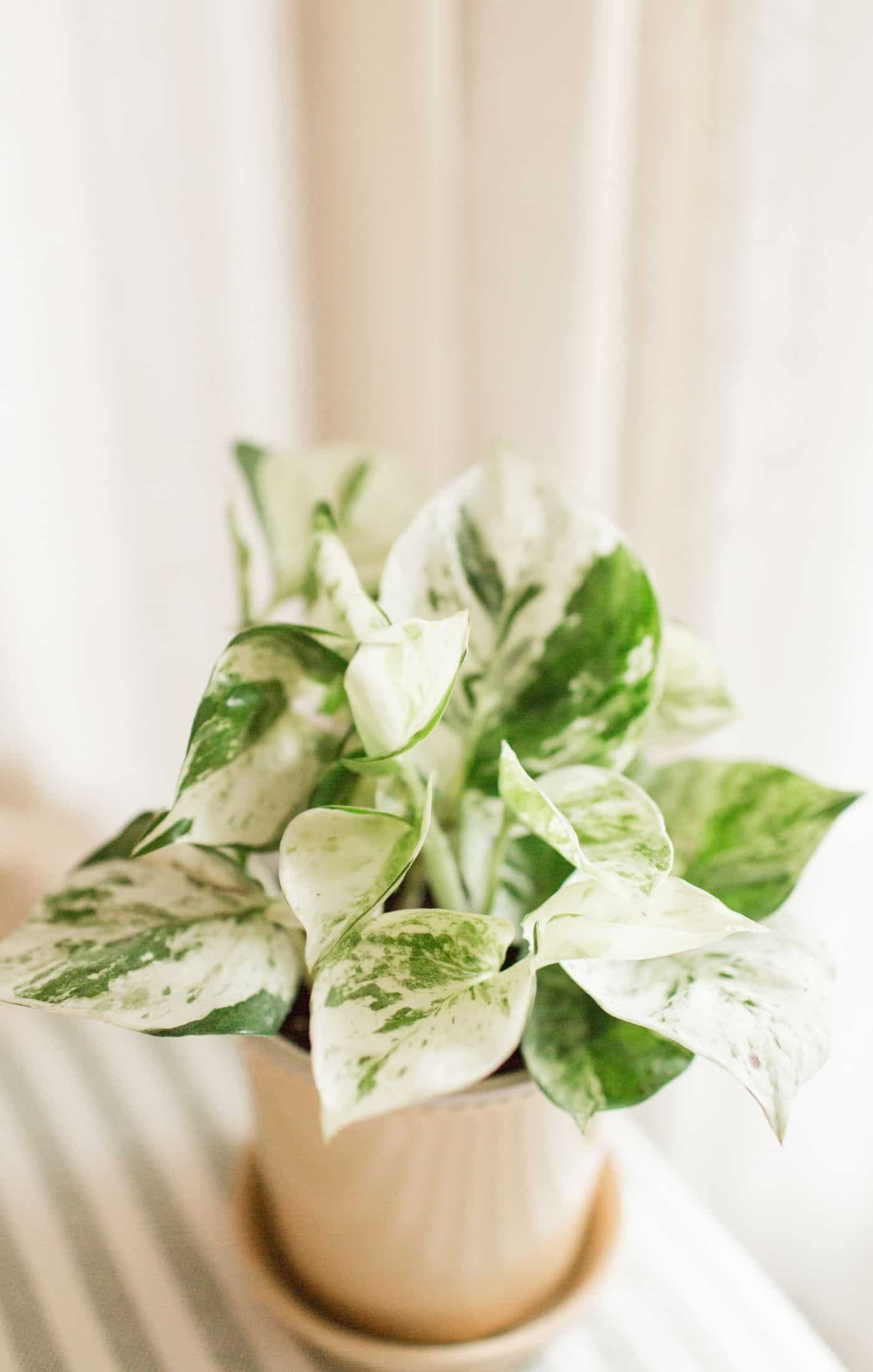
Pothos plant care guide
Pothos plants are perhaps the easiest tropical houseplant to care for. They tolerate irregular watering and less-than-perfect light conditions better than most indoor plants. Here are all the detailed care tips you need to take good care of this trailing tropical plant.
Watering pothos
Pothos can go days without water, and it’s recommended to let the soil dry out between waterings. However, you should still check your plant every so often to make sure it’s not drying out completely. Once the top inch of soil becomes dry, water thoroughly.
If you’re not sure whether your plant needs watering or not, check the leaves. Pothos that need water will have droopy leaves that perk right up after watering. In addition, you can poke holes in the soil with skewers or chopsticks to aerate the soil. Poking skinny holes in the soil can help break up overly dry and desiccated soil to let the water into the main root ball area.
Another thing to keep in mind when watering is soil drainage. Using well-draining potting soil will prevent root rot in most cases. In addition, make sure you plant your Pothos in a pot with a decent size draining hole to prevent excess water from becoming stagnant inside the planter.
Lastly, you may think you have overwatered your Pothos plant if there are tiny droplets of leaves at the tip of your plant’s leaves. However, water droplets on the leaves are entirely normal for Pothos due to their efficiency in carrying water from their roots to their leaves. These plants are mini humidifiers!
Light requirements for pothos
Pothos thrives in bright, indirect light. They can also tolerate areas with low light, such as an office or bathroom. However, giving your plant a few hours of indirect light per day is recommended to keep it healthy. If you don’t have access to bright, indirect light, you can use artificial plant lights. Variegated varieties like Golden or Marble Queen, thrive under a plant light as they need ample light to bring out their patterned leaves.
Another thing to remember when figuring out where to place your Pothos is too much light. Direct sunlight can cause foliage burn, which can harm or kill the plant in extreme cases. On the other hand, insufficient light causes Pothos’ leaves to become pale green in some varieties. Pothos also grows much more slowly with very little light.
Fertilizer for pothos
You can fertilize Pothos plants every month or two when they are most actively growing in the spring, summer, and fall. However, during the winter, it’s best not to fertilize your Pothos plant at all.
Look for an indoor fertilizer formulated for tropical plants. Be sure to read the instructions on the specific product you choose, as different fertilizers have different application rates and frequency requirements.
Humidity & temperature for pothos
Pothos plants are tropical plants that thrive in humidity levels of around 50%. However, as long as the humidity levels in your home are approximately 35-50%, your Pothos plant should be fine. In addition, the optimal temperature for Pothos plants is 70º-90ºF (21°-32°C).
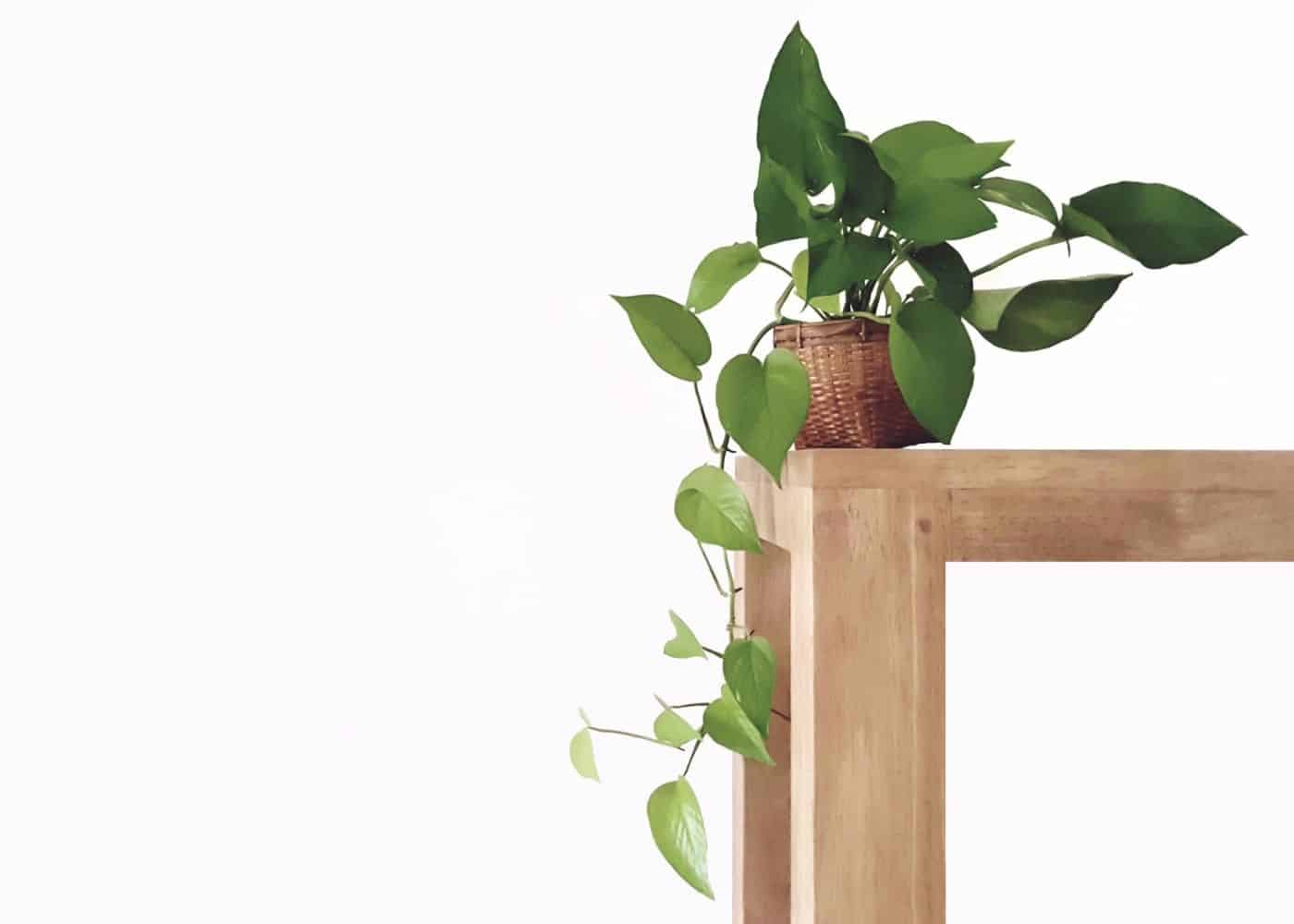
Repotting pothos
The best time to repot your Pothos plant is every year during the spring. Pothos plants can grow rapidly when adequately cared for, meaning you’ll need to repot your plant if you want it to continue growing. If you want your plant to stay relatively smaller, you can keep it in a smaller pot. If you choose to repot in a bigger planter, choose a pot with a drainage hole about 2″ wider in diameter than the existing pot.
Here is a detailed guide showing exactly how to repot a Pothos plant.
Potting soil for pothos
Pothos needs well-draining soil that isn’t too dense. If necessary, you can add perlite or coco coir to the mix to help the water drain better (although most high-quality potting soils contain these ingredients already).
Planter pots for pothos
Pothos thrive in a variety of containers. For example, you can use clay pots, but they tend to dry out the soil more quickly because they wick away moisture. If you decide to use a clay pot for your Pothos plant, know that you’ll need to water more frequently. You can also use plastic pots; however, these retain water, so you’ll need to ensure you don’t overwater. You can use a moss pole to encourage vines to grow upward if you don’t want them to hang over the edge of the pot (see picture below).
Lastly, you can place your Pothos plant in a ceramic-glazed hanging pot and let the vines trail down the side. If your Pothos plant is in a hanging pot or a high-level pot, the vines can reach up to 8 feet long!
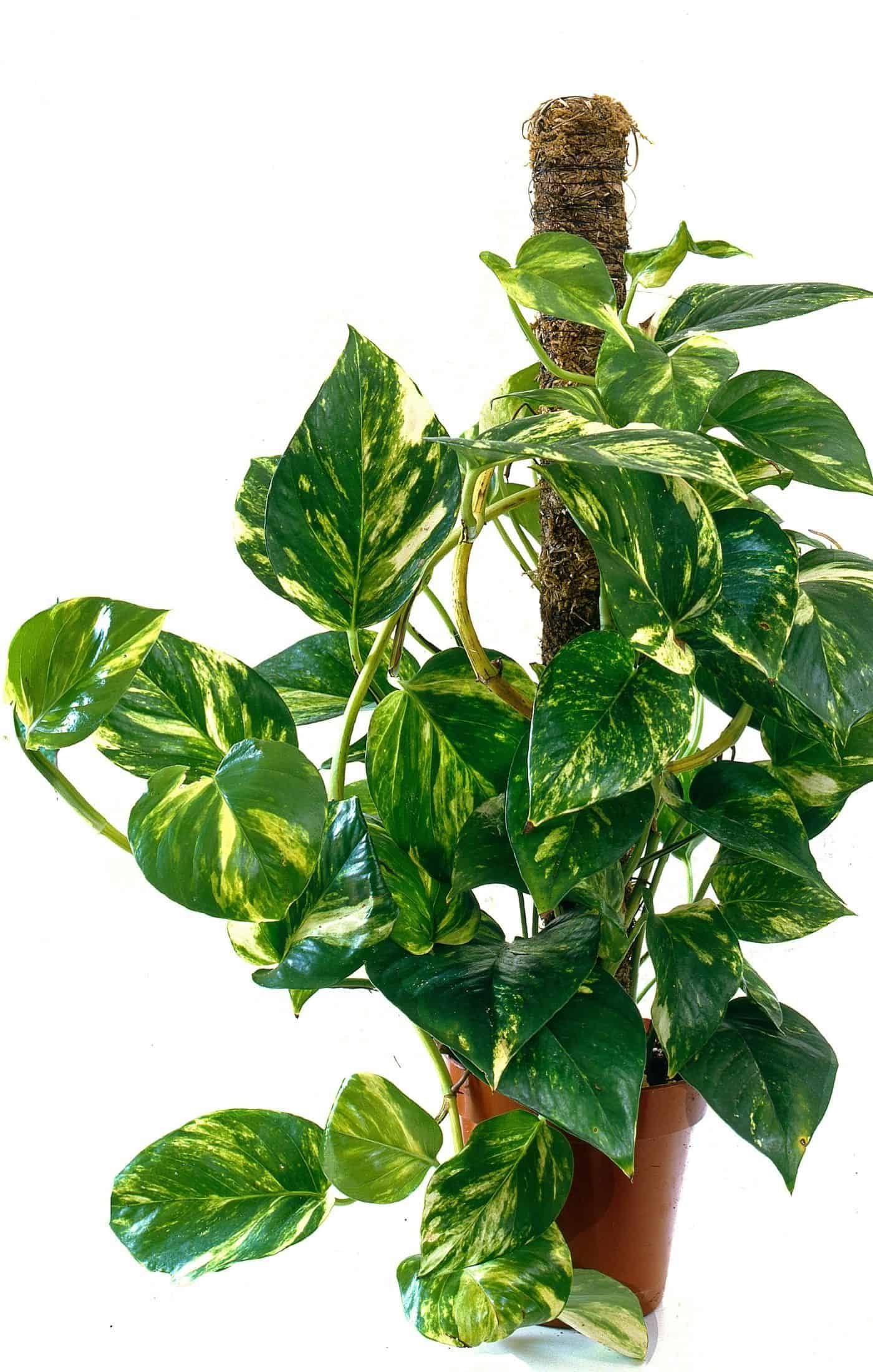
Propagating pothos
When it comes time to trim your Pothos plant, you can take the trimmings and replant them right back into the soil to generate new stems. Replanting the stem cuttings is known as propagation. Propagation isn’t as complicated as it sounds. Here is an in-depth guide on how to propagate Pothos!
Common pests affecting pothos houseplants
The most common pests affecting Pothos plants are mealybugs. Mealybugs are tiny, wingless bugs that look like cotton on your plant’s leaves. These bugs are most common in humid, moist environments, making them highly attracted to Pothos plants. Mealybugs can be treated by washing the foliage with warm soapy water and then spraying the plant regularly with an organic insecticide.
Less commonly, the top of the potting soil can harbor fungus gnats. These pest insects look like tiny black flies and lay eggs in the soil of moist planters. You can use the same organic insecticidal spray for these bugs. You may also want to put up some yellow sticky traps to catch the adults or just even monitor their presence.
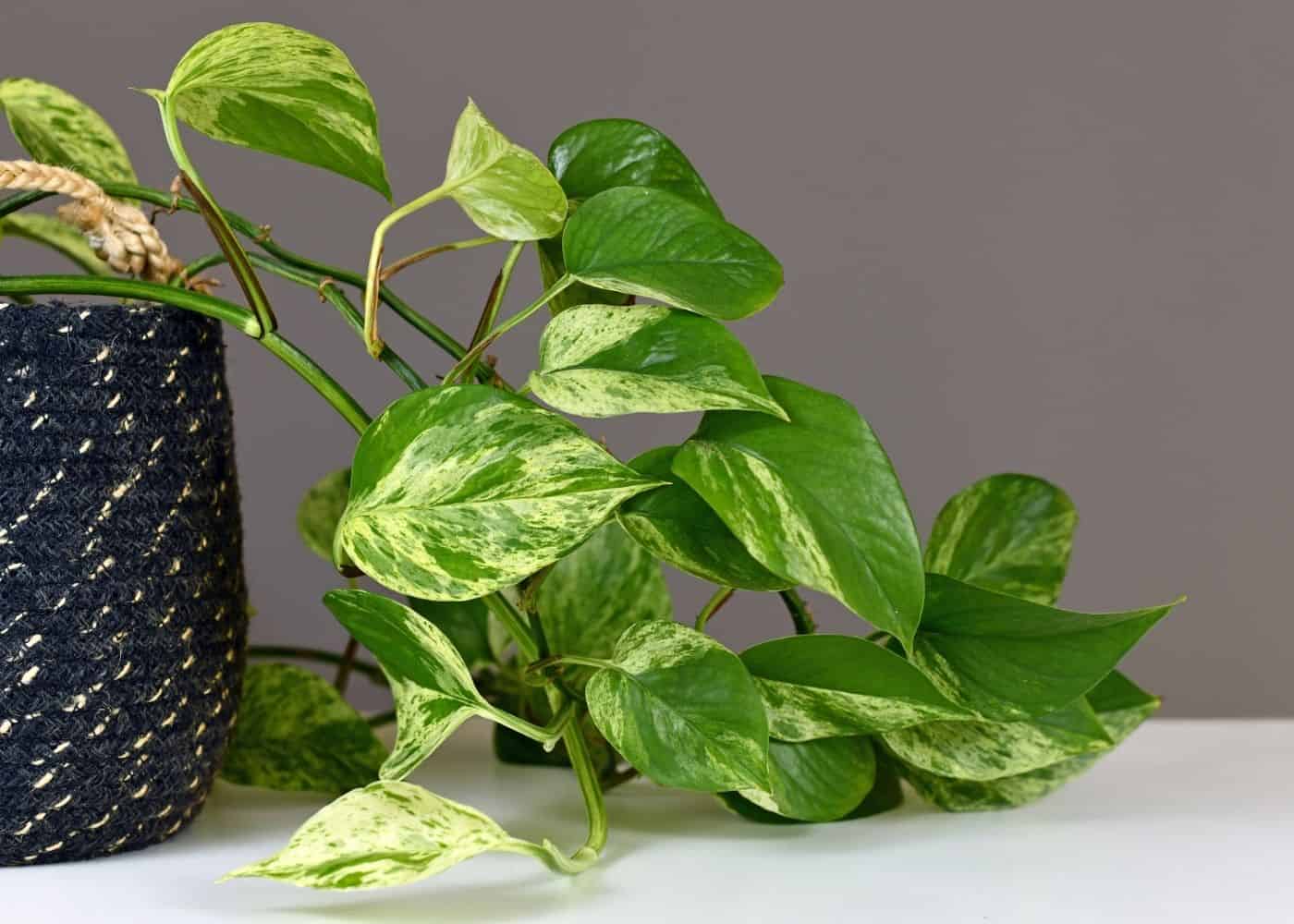
Common diseases affecting pothos
Very few diseases affect a Pothos plant. However, one thing that can affect Pothos is root rot. This is a fungal condition that thrives in moist soil conditions and poor air circulation. Root rot occurs from overwatering, poorly draining soil, and/or a poorly draining pot.
Pothos only needs to be watered when the top inch of soil feels dry, and even then, they can go for quite a stretch without water. Just try not to let the whole planter dry out as this is hard on the plant, and the potting soil is more difficult to hydrate after this happens.


